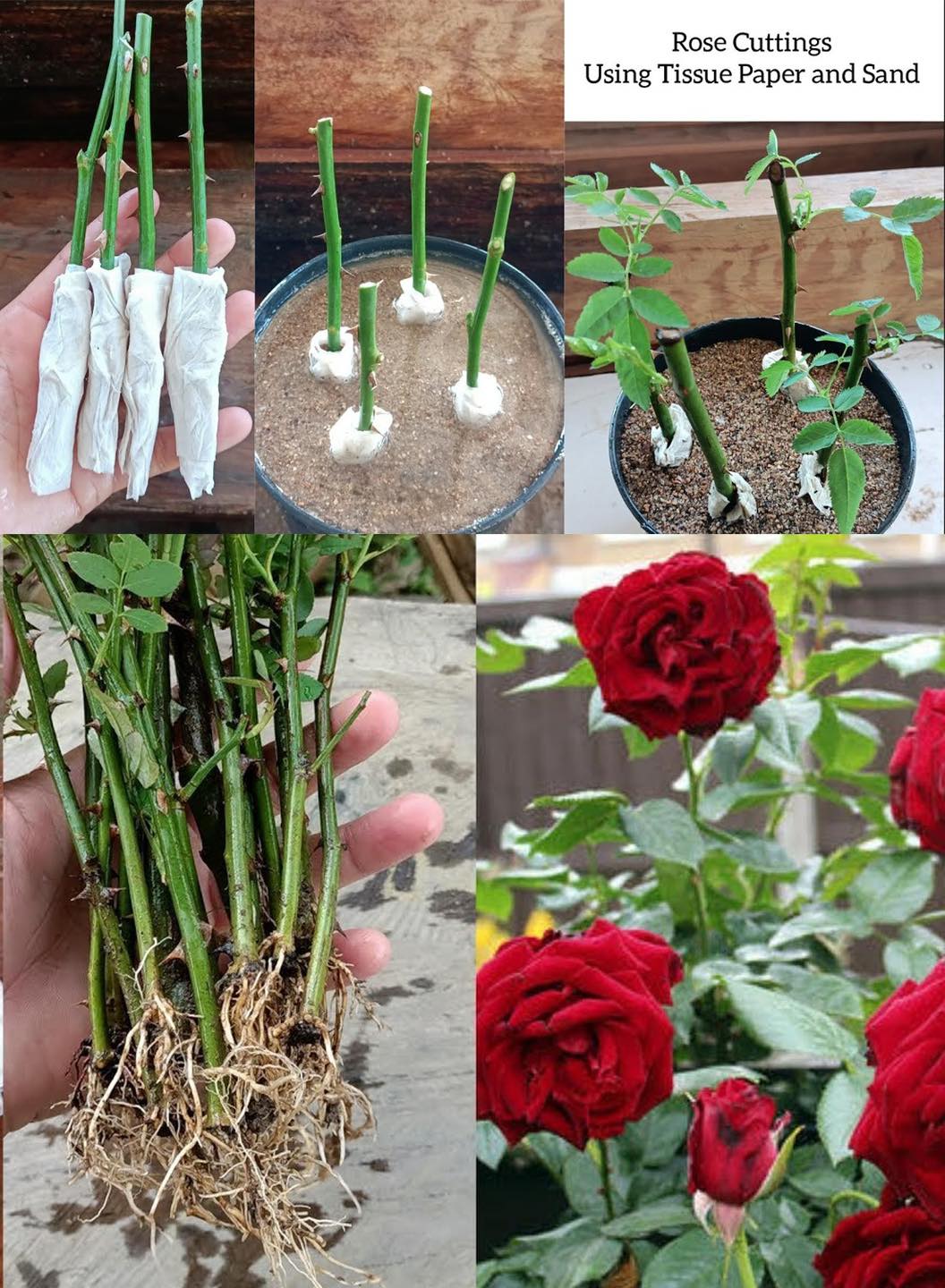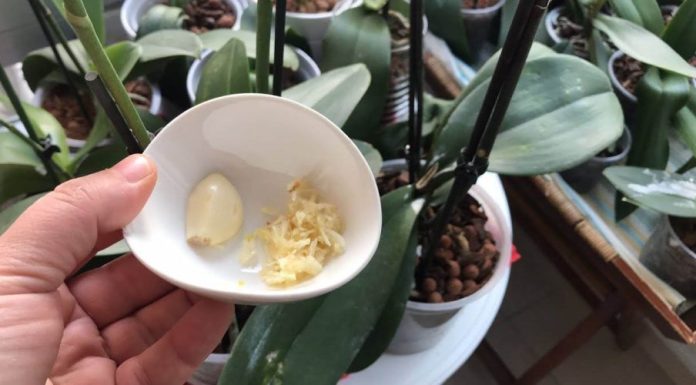Growing roses from cuttings is a well-known technique, but using toilet paper for this process can significantly enhance the success rate. Here’s a step-by-step guide on how to do it:

1. Choose the Right Cuttings:
Start with healthy young cuttings from a rose plant. Semi-hardwood cuttings, which are about 15 to 20 cm long, are ideal as they root easily. Use sharp, sanitized shears to cut the stems.
2. Prepare the Cuttings:
Remove the leaves from the stems to direct all the plant’s energy towards root growth. If you prefer, you can leave a few leaves at the top, but cut them in half to minimize stress.
3. Trim the Ends:
Cut both ends of each stem, making sure the bottom cut is at a 45° angle to increase the likelihood of successful root development.
4. Wrap with Toilet Paper:
Dip the end to be coated in a rooting hormone (optional), and wrap the stems with 3-4 layers of toilet paper. Avoid covering more than half of the stem to ensure proper air circulation.
5. Moisten Evenly:
Spray water on the toilet paper until it’s completely soaked, then squeeze out any excess water. Be cautious of the thorns when handling the stems.
6. Prepare a Pot:
Use a medium-sized pot with well-drained potting soil. You can create a suitable growing medium by mixing garden soil, compost, and river sand.
7. Plant the Cuttings:
Place the cuttings in the pot, covering them with soil up to 50-75% of their height. Ensure that the soil only covers the toilet paper-wrapped part of the cutting.
8. Water and Position:
Water the soil and cuttings evenly and place the pot in a location with bright, indirect light. Avoid direct sunlight initially as it can hinder root development.
9. Monitor Growth:
After 2-4 weeks, new leaves should begin to sprout, indicating root growth. Carefully check for roots and once they’re established, you can plant the cuttings in your garden or individual pots.
This method is particularly effective because the toilet paper maintains consistent moisture at the bottom of the stem, crucial for root development. It’s a simple, yet ingenious way to propagate roses successfully.










